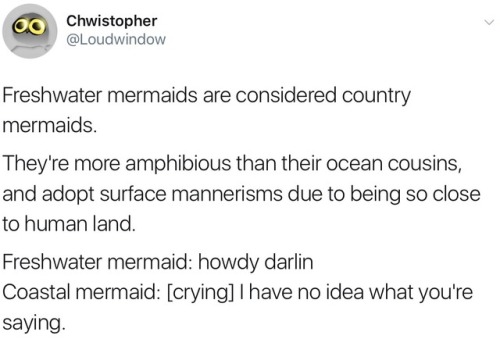Thejunkdrawers - I Might Need It Later...



More Posts from Thejunkdrawers and Others



Blue’s Feathers and Wings Compendium: Atypical Wing Shapes
Wings Part 1 [Standard ]| Wings Part 2 [Atypical] | Feather Markings | Tail Feathers [Part 1] | Tail Feathers [Part2]
These wings are a small array of Atypical wing shapes, complete with flippered wings, flightless wings, and fancy plumes. Again, creating my own names for some of these wing types since there isn’t any official naming of the different shapes, and I want to make it easily understandable for others rather than complicating these things with academic names.
hey when you make posts, i just want you to know, thou/thee/thy/thine/ye are like he/you(object)/your/yours/you(subject) okay? "thou art wearing shoes," "i will wear shoes for thee," okay?
you say thine if the next word starts with a vowel and thy if the next word starts with a consonant and they both mean "your" so "thine own shoes," "thy shoes," okay?
and ye means you and refers to the subject of a sentence, "ye members of the brotherhood of shoes," okay? you need this information to create better knight yaoi. i'm personally more interested in nun yuri but we are a community
Apparently a lot of people get dialogue punctuation wrong despite having an otherwise solid grasp of grammar, possibly because they’re used to writing essays rather than prose. I don’t wanna be the asshole who complains about writing errors and then doesn’t offer to help, so here are the basics summarized as simply as I could manage on my phone (“dialogue tag” just refers to phrases like “he said,” “she whispered,” “they asked”):
“For most dialogue, use a comma after the sentence and don’t capitalize the next word after the quotation mark,” she said.
“But what if you’re using a question mark rather than a period?” they asked.
“When using a dialogue tag, you never capitalize the word after the quotation mark unless it’s a proper noun!” she snapped.
“When breaking up a single sentence with a dialogue tag,” she said, “use commas.”
“This is a single sentence,” she said. “Now, this is a second stand-alone sentence, so there’s no comma after ‘she said.’”
“There’s no dialogue tag after this sentence, so end it with a period rather than a comma.” She frowned, suddenly concerned that the entire post was as unasked for as it was sanctimonious.
Concept: a post-apoc survival game where the premise is that the previous batch of heroes stopped one of those allegorical JRPG-style apocalypses, but the physical consequences didn’t magically undo themselves afterwards, so now everyone has to to deal with symbolic bullshit like your agricultural land being replaced with forests of stone hands, or that giant eyeball where your capital city used to be. The tone could be horror, but it’s not; rather, the emphasis is on how incredibly inconvenient it is for everybody that pieces of the world have been transformed into half-baked metaphors for hating your dad.
ayo i found 2 pages with head angles of humans and animals, could be useful to anyone reading this

hoomans

animals


refseek.com

www.worldcat.org/

link.springer.com

http://bioline.org.br/

repec.org

science.gov

pdfdrive.com
help what were those little graspy hands that held stuff people used to wear on their skirts called
long-distance mech pilots don’t need to worry quite so much about traveling light. when you’re walking around in several tons of metal, especially one built to wander, you aren’t quite to the point of needing to choose which of two keepsakes you have room in your bag for— there’s plenty of space for both.
Things are different for interstellar knights.
You see, whether wandering alone or setting off on some quest for their lord, a knight’s only home is their armor. Anything they bring with them, they must carry within that armor, even through battles— and as such, every gram and every cubic centimeter can make the difference between life and death, and every calorie chosen to replace a keepsake can make the difference between survival and starvation. As such, a knight’s inventory is heavily optimized— and so is their armor itself. What matters more, the heating system or the EVA boosters? The extra fuel storage or the emergency release mechanisms? Pick one, and you’ll have no room for the other unless you can cut corners somewhere else. Every single element of a knight’s armor is there because they made the conscious decision to put it there. Every weapon they’ve attached to their shell had to replace some traditional aspect of a life support system. Every inch of their shells are packed full of every system that can fit until it’s tight against the pilot’s skin to leave them bruised whenever they exit their shell.
it doesn’t take long for them to realize which superfluous components are the weakest link.
They start small, at first— often as simple as a haircut to help a tighter helmet fit better. Some try to lose weight, but quickly regret it when they find themselves near starvation on some distant moon. The ones that survive past their first year are the ones that are willing to take things a bit further— the toes on both feet, to make room for a slight jump booster. One of their ribs, perhaps— replaced with a battery that connects to the armor through a cable that winds around bones and muscles. It’s only a matter of time before they do something about those bones and muscles too.
those who have only heard the stories will say that a knight’s armor is their home. Those who have met one, seen them exit their armor and seen just how little is left of the body inside— they will say that a knight’s armor is a part of their body. Integrated into them until they cannot survive without it. Both are wrong. Even some knights cannot pin down the true answer— what they really feel as they connect their armor to the components of it that they have placed inside of them. The best ones do, though. They know it well.
A knight’s armor is not a part of their body. Their body is a part of their armor— their home, to be renovated and optimized as they see fit. To be replaced, improved, amputated and eviscerated so that it can be remade into the glorious works of art that the heroes of the galaxy become as they charge into battle and become a story worth remembering.
As the armor learns to reach into your veins, pulling oxygen from the carbon dioxide you exhale and weaving it back into your blood, the space once taken up by inefficient organic lungs becomes the home of the heating system, warming you from within no matter what part of the void between stars you find yourself in. As it recycles amino acids into proteins again and infuses them back into what tissues remain, you’re free to remove your old digestive organs and find a home for your armor’s main computer, kept safe at the center of your shell. Many knights choose to put their own organic brain down there next to it, incidentally making room for more optical systems in their skulls.
Your armor is no longer simply “a part of you” and you are no longer simply “a part of it.” It is you. You are it. Your bones, its power cells, your organs its systems. You are its brain and its CPU in equal measure and its beautiful exterior plates, painted with the symbols of the lord you serve or simply the cause you stand for, will inspire others to take up arms themselves and let themselves become part of it.
your body, your home, your masterpiece
-
 thejunkdrawers reblogged this · 2 months ago
thejunkdrawers reblogged this · 2 months ago -
 pill-ciphore reblogged this · 3 months ago
pill-ciphore reblogged this · 3 months ago -
 pill-ciphore liked this · 3 months ago
pill-ciphore liked this · 3 months ago -
 ghostlytheghostwriter liked this · 4 months ago
ghostlytheghostwriter liked this · 4 months ago -
 geeksthetics reblogged this · 5 months ago
geeksthetics reblogged this · 5 months ago -
 silent-weightlessness reblogged this · 5 months ago
silent-weightlessness reblogged this · 5 months ago -
 silent-weightlessness liked this · 5 months ago
silent-weightlessness liked this · 5 months ago -
 annaqtzyy liked this · 6 months ago
annaqtzyy liked this · 6 months ago -
 namelessman2 liked this · 6 months ago
namelessman2 liked this · 6 months ago -
 d144-catzie liked this · 7 months ago
d144-catzie liked this · 7 months ago -
 nightmarearian reblogged this · 10 months ago
nightmarearian reblogged this · 10 months ago -
 sweatyballoonhottub liked this · 10 months ago
sweatyballoonhottub liked this · 10 months ago -
 la-beans-guardian liked this · 11 months ago
la-beans-guardian liked this · 11 months ago -
 namlessman liked this · 11 months ago
namlessman liked this · 11 months ago -
 greengroblin reblogged this · 11 months ago
greengroblin reblogged this · 11 months ago -
 confusedeldritch reblogged this · 11 months ago
confusedeldritch reblogged this · 11 months ago -
 confusedeldritch liked this · 11 months ago
confusedeldritch liked this · 11 months ago -
 lunasilverhart reblogged this · 11 months ago
lunasilverhart reblogged this · 11 months ago -
 random-chaotic-bitch liked this · 11 months ago
random-chaotic-bitch liked this · 11 months ago -
 should-probably-be-sleeping liked this · 11 months ago
should-probably-be-sleeping liked this · 11 months ago -
 ceylonsilvergirl reblogged this · 11 months ago
ceylonsilvergirl reblogged this · 11 months ago -
 ceylonsilvergirl liked this · 11 months ago
ceylonsilvergirl liked this · 11 months ago -
 yellingschmetterling reblogged this · 11 months ago
yellingschmetterling reblogged this · 11 months ago -
 the-apogee liked this · 11 months ago
the-apogee liked this · 11 months ago -
 ryuutchi reblogged this · 11 months ago
ryuutchi reblogged this · 11 months ago -
 randomeldrtichhorror liked this · 1 year ago
randomeldrtichhorror liked this · 1 year ago -
 aloeblooms liked this · 1 year ago
aloeblooms liked this · 1 year ago -
 betty-the-vampire-slayer liked this · 1 year ago
betty-the-vampire-slayer liked this · 1 year ago -
 crafty-goth reblogged this · 1 year ago
crafty-goth reblogged this · 1 year ago -
 sgchan reblogged this · 1 year ago
sgchan reblogged this · 1 year ago -
 aryyn-meatgrinder reblogged this · 1 year ago
aryyn-meatgrinder reblogged this · 1 year ago -
 aryyn-meatgrinder liked this · 1 year ago
aryyn-meatgrinder liked this · 1 year ago -
 the-dragon-sianthus reblogged this · 1 year ago
the-dragon-sianthus reblogged this · 1 year ago -
 the-dragon-sianthus liked this · 1 year ago
the-dragon-sianthus liked this · 1 year ago -
 lemonlightt liked this · 1 year ago
lemonlightt liked this · 1 year ago -
 official-flaischkassemmal reblogged this · 1 year ago
official-flaischkassemmal reblogged this · 1 year ago -
 bunwithantlers reblogged this · 1 year ago
bunwithantlers reblogged this · 1 year ago -
 toiletpaperfandom reblogged this · 1 year ago
toiletpaperfandom reblogged this · 1 year ago -
 homeiswherethehabitatorhabitats reblogged this · 1 year ago
homeiswherethehabitatorhabitats reblogged this · 1 year ago -
 sound-a-sheep liked this · 1 year ago
sound-a-sheep liked this · 1 year ago -
 navigatorsnorth reblogged this · 1 year ago
navigatorsnorth reblogged this · 1 year ago -
 emperor-xerneas reblogged this · 1 year ago
emperor-xerneas reblogged this · 1 year ago -
 emperor-xerneas liked this · 1 year ago
emperor-xerneas liked this · 1 year ago -
 wastedoverachiever liked this · 1 year ago
wastedoverachiever liked this · 1 year ago -
 pharbez liked this · 1 year ago
pharbez liked this · 1 year ago -
 mr-mango-tango reblogged this · 1 year ago
mr-mango-tango reblogged this · 1 year ago -
 mr-mango-tango liked this · 1 year ago
mr-mango-tango liked this · 1 year ago -
 azrail-has-a-vendetta liked this · 1 year ago
azrail-has-a-vendetta liked this · 1 year ago

A side blog where I'll *try* to keep things organised.yeahthatsnotgoingtolastlong
241 posts





